Enigmatic, evocative, and overflowing with history, Istanbul’s ancient Basilica Cistern will surprise you (and may even creep you out a bit too!).
After a delicious Turkish breakfast at our favorite little place in Sultanahmet, Lori and I headed to an unassuming little building within a stone’s throw of Hagia Sophia.
On any other day, I would have walked right on by without giving a second thought to what the building was for. But today, I know better. It’s the gateway to Istanbul’s ancient and mysterious underworld—a portal through the ages.
Here’s our complete guide to visiting Istanbul’s Basilica Cistern, with lots of first-hand tips and information for planning your own adventure into the underworld.

⭑ Money-Saving Tips ⭑
Istanbul’s top attractions aren’t exactly cheap these days. If you plan on visiting multiple sights, there are a couple of key things that will save you a lot of money (and time!).
Istanbul Tourist Pass
The Istanbul Tourist Pass gives you access to over 100 top attractions in Istanbul like the Basilica Cistern, Hagia Sophia, Galata Tower, Topkapi Palace, a Bosphorus cruise and more (plus discounts on transport). This pass allows you to skip the ticket sales line, and it’s good from 1 to 5 days.
Tour Packages
A half- or full-day tour led by an expert guide can also save you time and money. Check out this top-rated 3-hour skip-the-line PRIVATE TOUR that includes visits to both the Basilica Cistern AND Topkapi Palace; or this top-rated Istanbul Highlights SMALL-GROUP tour.
Kid Tip
Admission is free for children under 7 years old. However, you may still need to visit the ticket window to obtain a free ticket for your kids.
This post contains affiliate links. If you click and make a purchase, we might receive a commission (at no added cost to you). Thanks for supporting independent, ad-free blogs!
Why Visit
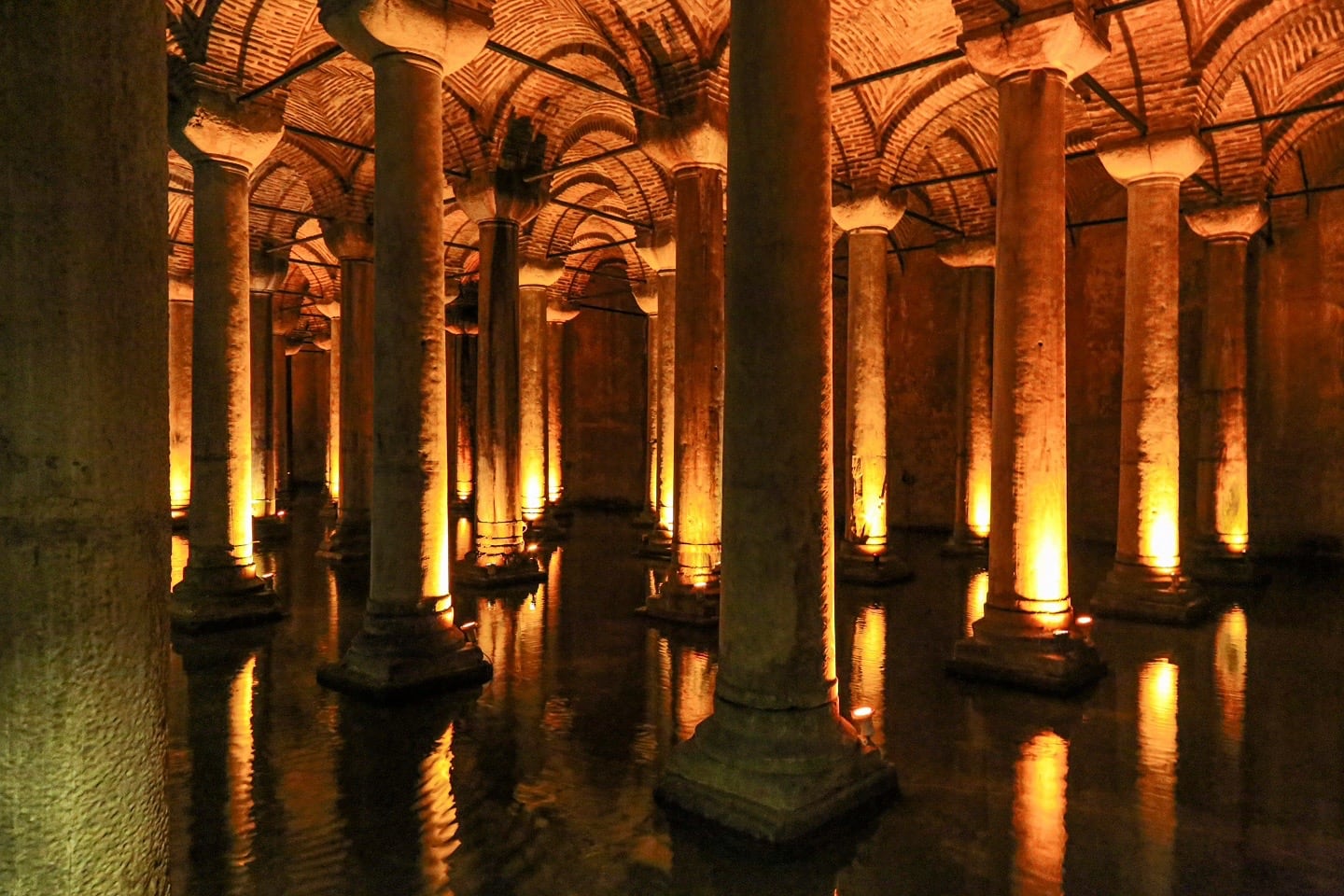
When we descended into the depths, we immediately felt the shift in atmosphere. The temperature dropped, the light dimmed, and the echoes of footsteps on the well-worn stone transported us to another time.
The Basilica Cistern (or Yerebatan Sarayı, meaning “sunken palace” in Turkish), is the largest of hundreds of ancient cisterns beneath the city.
This particular cistern wasn’t originally intended to be a cistern at all, but the crypt of the Stoa Basilica, built by the Romans between the 3rd and 4th centuries.
It was Byzantine Emperor Justinian I (along with the help of some 7,000 slaves) who converted the space into a cistern, providing a filtered water source for the city’s elite into the 20th century.
In more recent times, the Basilica Cistern appeared in the 1963 James Bond film, From Russia With Love, and 2009’s The International, though it is neither under the Russian/Soviet embassy nor beneath the Sultan Ahmed Mosque as both films suggest.
Today, we’re fortunate to have the crypt-turned-cistern-turned-tourist-attraction largely to ourselves, which is a minor miracle in Istanbul’s UNESCO quarter in August.
But it’s midweek, and perhaps most importantly, it’s early! We managed to get in just as they were opening things up.

Here’s why the Basilica Cistern belongs on your Istanbul itinerary:
- A Tangible Example of Byzantine Engineering: Built with more than 300 columns, many repurposed from earlier Roman temples, it’s a well-preserved example of the empire’s architectural ingenuity.
- Immersive History: You’re literally walking through history—a hidden layer of the city that few ancient capitals can rival.
- Cinematic & Cultural Icon: The cistern has appeared in films like From Russia with Love, The International, and Inferno, cementing its status as one of Istanbul’s most cinematic backdrops.
- A Refuge from the Heat: In summer, its a cool and refreshing escape from the hot and busy streets, above.
- Myths and Symbols: From the mysterious Medusa heads to the haunting acoustics, there are many stories waiting for you to discover.
In short, it was a highlight of our time in Istanbul. That surprised us a bit, given the sheer number of historic attractions there are in this city. I guess it’s a testament to how unique and captivating this place is.
You’ll likely already find yourself at Hagia Sophia, anyway (which is right around the corner from the cistern). In that way, it’s one of the most convenient sights in Istabul. That means, it’s also very popular.
Here are our recommendations for the best ways to experience this fascinating place:
The Best Ways to Experience the Basilica Cistern

Guided & Package Tours
We think joining a guided tour is one of the best ways to really appreciate the cistern’s history and symbolism.
Knowledgeable local guides explain the engineering behind the aqueduct system, the significance of the Medusa heads, and the myths surrounding the structure. Tours typically last about 30–45 minutes.
You can take your chances with a guide off the street, but we don’t usually recommend going this route. Booking online through reputable sites like Viator, TripAdvisor, or GetYourGuide offers the benefit of being able to read recent traveler reviews and knowing exactly what you’re signing up for.
On the other hand, if you’re looking for one of the best guided tours on the market, check out this top-rated 3-hour skip-the-line private tour that includes visits to both the Basilica Cistern AND Topkapi Palace.
If a small-group tour is more your speed, it’s hard to beat this top-rated, full-day Istanbul Highlights tour led by a local expert. Stops include the Basilica Cistern and Grand Bazaar, Blue Mosque, Topkapi Palace, and Hagia Sophia, and even a 90-minute Bosphorus Cruise.
Keep in mind, these tours don’t include the entry fees (we recommend checking out the Istanbul Tourist Pass or Museum Pass for deep discounts on those—more on that below).
Themed Cultural Events
Check local social media and websites before you visit—the Basilica Cistern occasionally hosts classical concerts, light installations, and art exhibits, such as Night Shift Surprise Concerts and Voices from the Deep. Experiencing a live performance in this setting is unlike anything else in Istanbul.
Self-Guided Exploration
Even without a guide, the cistern invites quiet contemplation (if you manage to successfully avoid the onslaught of crowds—look for our tips later in this guide).
Try to take your time wandering the walkways, listen to the dripping water, and let it all transport you back through the centuries.
If you do visit on your own, the next section has a wealth of information for you, including helpful tips on how to get there and what to know about buying tickets.
Ticket + Entry Tips
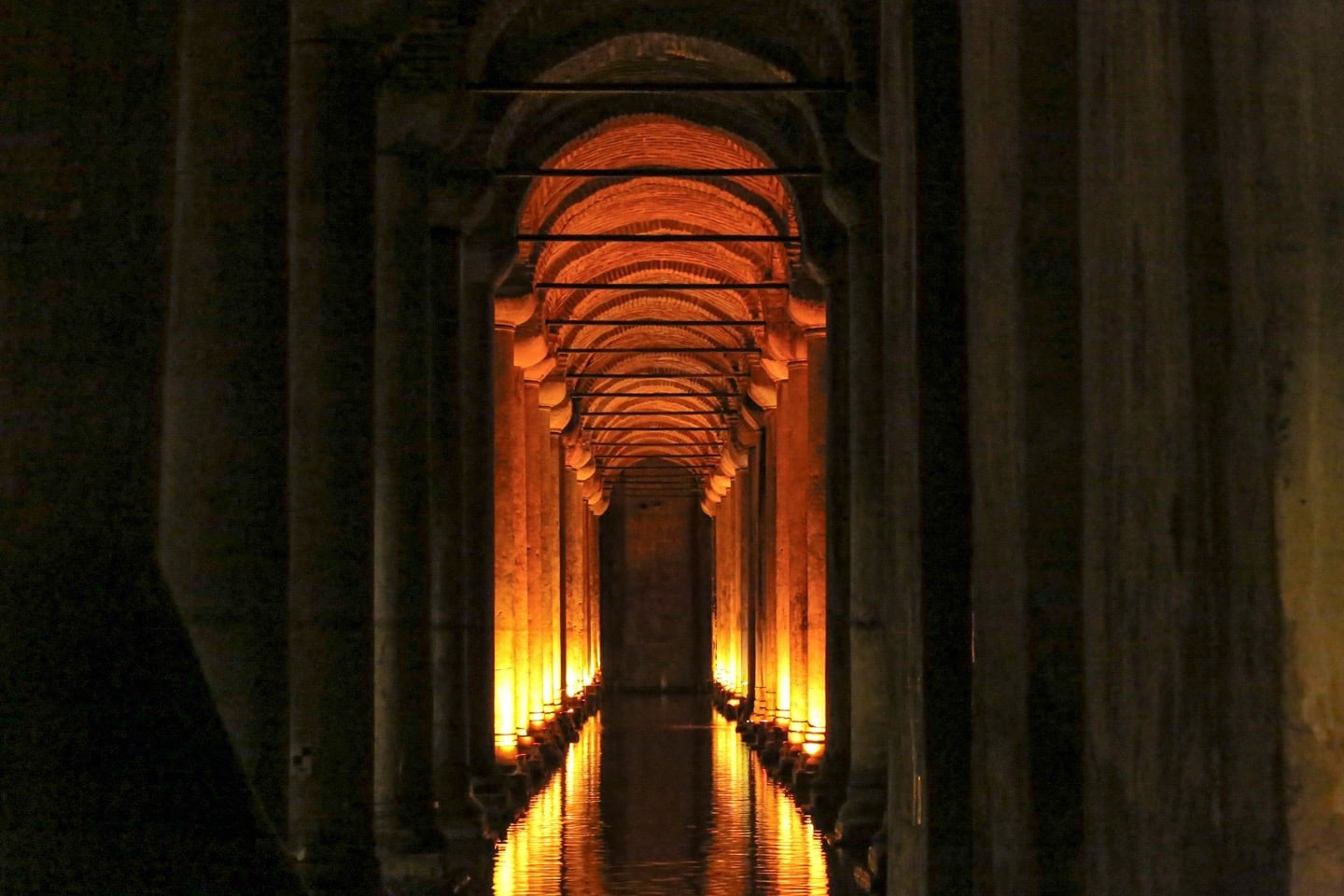
Admission
Entrance fees to Istanbul’s top attractions has risen significantly in the past year for foreign tourists, and it’s not clear if this trend will continue into the future.
As of November 2025, the ticket price for foreign nationals is 1500 TL (US$35) for the 9am-6:30pm time period, and 2400 TL (US$57) for the 6:30pm-10pm that coincides with the Night Shift concert series. Entry is free for children under 7 years old.
Tickets can be purchased at the door or online ahead of time. Do keep in mind that ticket lines can be very long (in the summertime, they say to budget 30-60 minutes of wait time).
The quickest way in is to visit outside of peak hours (see below) and to purchase skip-the-line tickets ahead of time. You can purchase tickets through the official ticketing website, or through GetYourGuide.
✪ Important Last we checked, GetYourGuide used a better conversion rate for foreign currencies and had fewer fees than the official ticket site, so we recommend going this route).
Discounts
The best deal going (by far) is the Istanbul Tourist Pass, which gives you access to over 100 top attractions, including the Basilica Cistern—and even allows you to jump the queue in most cases.
Do note, however, that if you’re thinking of getting the Istanbul Museum Pass (which is different from the Istanbul Tourist Pass), that one is not currently valid at the cistern.
Hours
The Basilica Cistern is open daily to the public from 9am to 6:30pm. It is also open from 6:30pm to 10pm with a higher admission fee for the Night Shift concert series.
Getting There
The Basilica Cistern is one of the easiest sights to access in Istanbul—if you know what your looking for.
Head to the southwest corner of Hagia Sophia and look for the distinctive three-story Turşucuzade Konağı mansion. The entrance to the cistern is across the street (see map above).
✪ Location Alemdar, Yerebatan Cd. 1/3, 34110 Fatih/İstanbul, Türkiye
✪ How to Get There
- By Tram: Take the T1 Tram Line to Sultanahmet Station. From there, it’s a 3-minute walk.
- By Foot: If you’re staying in the Sultanahmet area, you can easily reach it along with Hagia Sophia and Topkapi Palace.
- By Taxi or Ride Share: Ask for “Yerebatan Sarnıcı.” Traffic in the old city can be pretty bad at times, so allow extra time if you go this route.
What to See Inside the Basilica Cistern
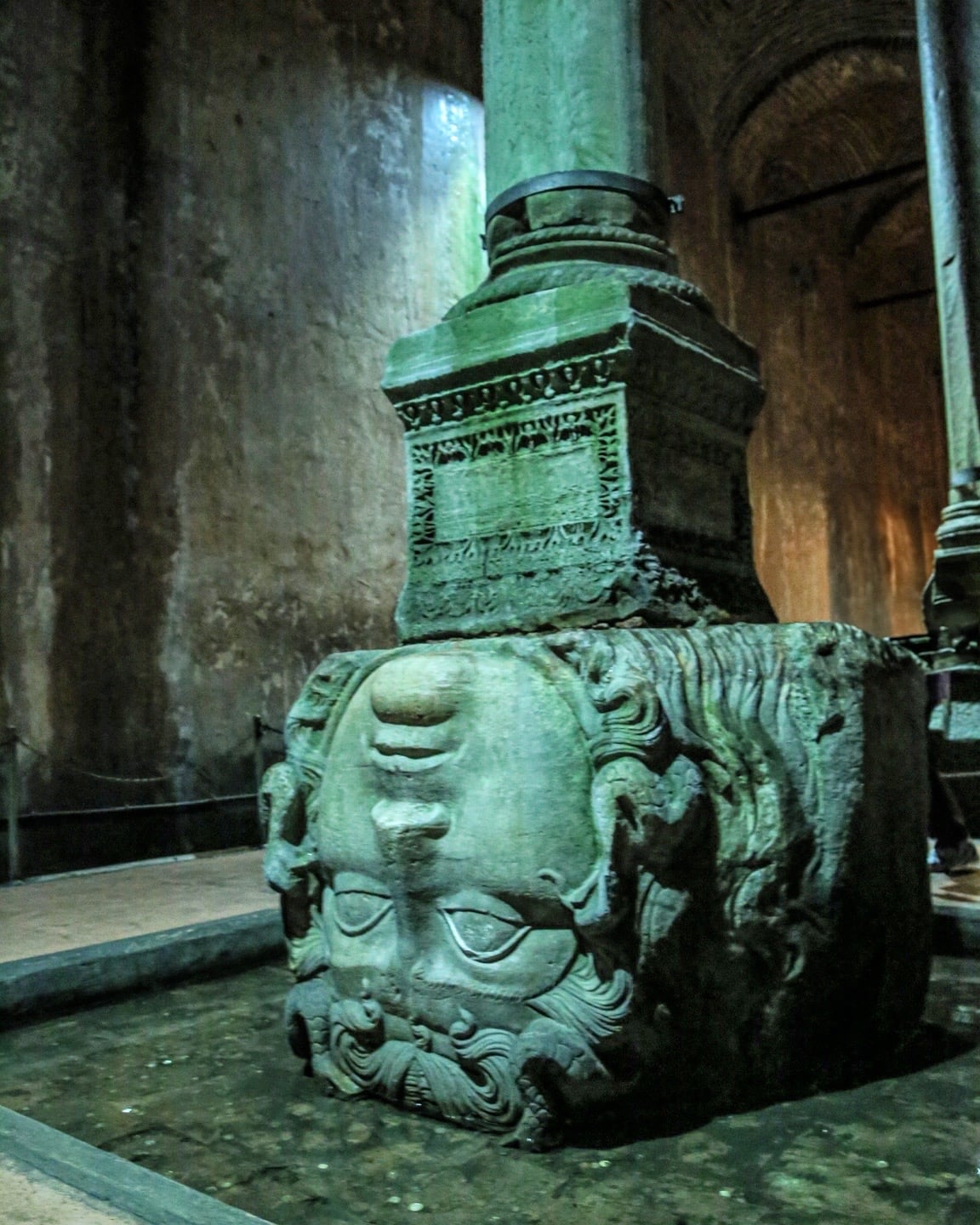
It’s apparent a lot of work has gone in to preserving, but also presenting this unique subterranean historical site. Given it’s history and age, it’s quite amazing how well-preserved the Basilica Cistern actually is.
We couldn’t help but be awe-struck, and dare I say a bit creeped out, by the vast, dimly-lit, water-filled labyrinth that evokes a time and place that few above-ground structures do in Istanbul.
The Basilica Cistern feels something akin to an ancient subterranean cathedral. The space is vast—140 meters long, 70 meters wide—supported by 336 marble columns rising from shallow pools of water. The lighting is intentionally dimmed, creating shimmering reflections across the ceiling.
As you make your way around the cistern, keep an eye out for these key features.
The Forest of Columns
The most striking feature of the cistern is its seemingly endless forest of marble columns. Each stands about 9 meters tall, and no two are exactly the same.
Many were actually salvaged from earlier Roman and Greek structures. As you make your way along the raised walkways, you’ll notice various column styles—Ionic, Corinthian, and Doric—all coexisting harmoniously in the underworld.
The Medusa Heads
At the far northwest corner of the cistern lie its most famous residents—two Medusa heads used as bases for columns. For unknown reasons, one is placed sideways, while the other is upside down. Were they positioned this way for symbolic protection? Or simply to fit the column bases? Perhaps, we’ll never know!
The Tears Column (Hen’s Eye Column)
Another point of interest is the Tears Column (look for the column with carvings of eyes and teardrop patterns). It’s said to commemorate the hundreds of slaves and laborers who died during the cistern’s construction. Visitors have long touched the column for good luck or to make a wish.
The Water and Reflections
The shallow pools of water that remain today serve no practical purpose—they just look cool! Coins glint beneath the surface, thrown by visitors making wishes, while carp swim lazily through the reflections.

Best Time to Visit
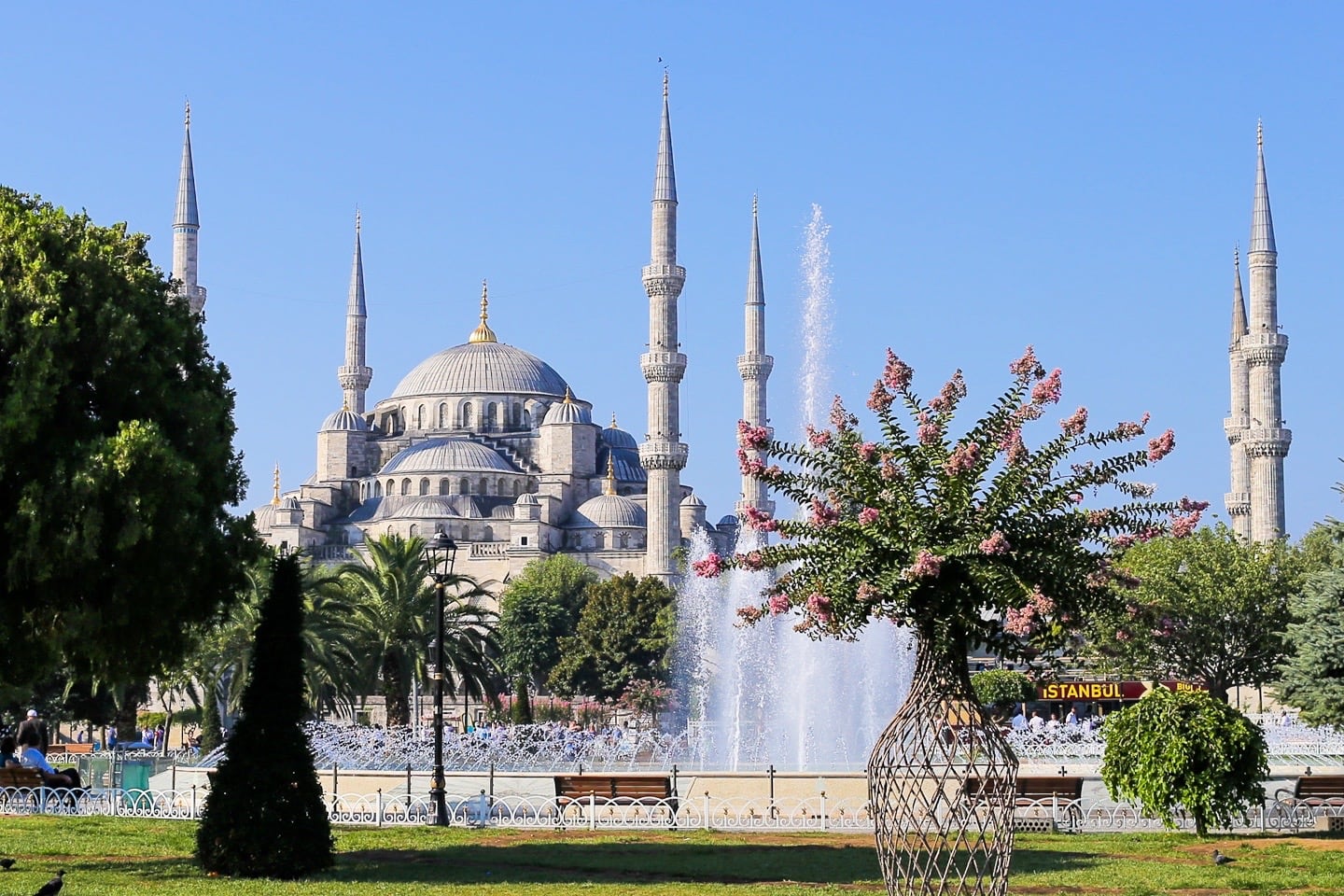
The Basilica Cistern is open year-round, but the experience can vary across seasons:
- Spring (March–May) & Autumn (September-November): Mild weather makes it easy to explore Sultanahmet before or after your visit. Expect moderate crowds.
- Summer (June–August): The cistern can be a welcome escape from the heat. However, it can get brutally busy, with waits sometimes of 60 minutes or more.
- Winter (December–February): Winter can be downright cold in Istanbul. But the trade off is the fewest visitors of the year and a more serene and atmospheric cistern experience.
✪ Hot Tip Whichever time of year you visit, it’s usually a good bet to arrive on a weekday just after opening (9am) or an hour before closing (9pm-10pm) for the most peaceful experience.
Nearby Attractions

Because the Basilica Cistern is located in the heart of Sultanahmet, it’s easy to explore several major attractions within a short walking distance:
- Hagia Sophia: The city’s most iconic monument, blending Byzantine and Ottoman architecture.
- Blue Mosque (Sultan Ahmed Mosque): A masterpiece of Islamic design known for its six minarets and blue İznik tiles. Quite possibly, the most conspicuous landmark in its namesake Sultanahmet neighborhood.
- Topkapi Palace: The plush and sprawling home of Ottoman sultans for over 400 years.
- Hippodrome of Constantinople: An ancient chariot-racing arena surrounded by historical monuments.
Where to Eat Nearby

After your visit, enjoy a meal or coffee nearby:
- Seven Hills Restaurant: Rooftop dining with iconic views of Hagia Sophia and the Bosphorus.
- Tarihi Sultanahmet Köftecisi Selim Usta: Great for a casual lunch with traditional Turkish pide (flatbread pizza).
- House of Medusa: Located in a restored Ottoman house near the cistern, serving Turkish and Mediterranean dishes.
Final Thoughts
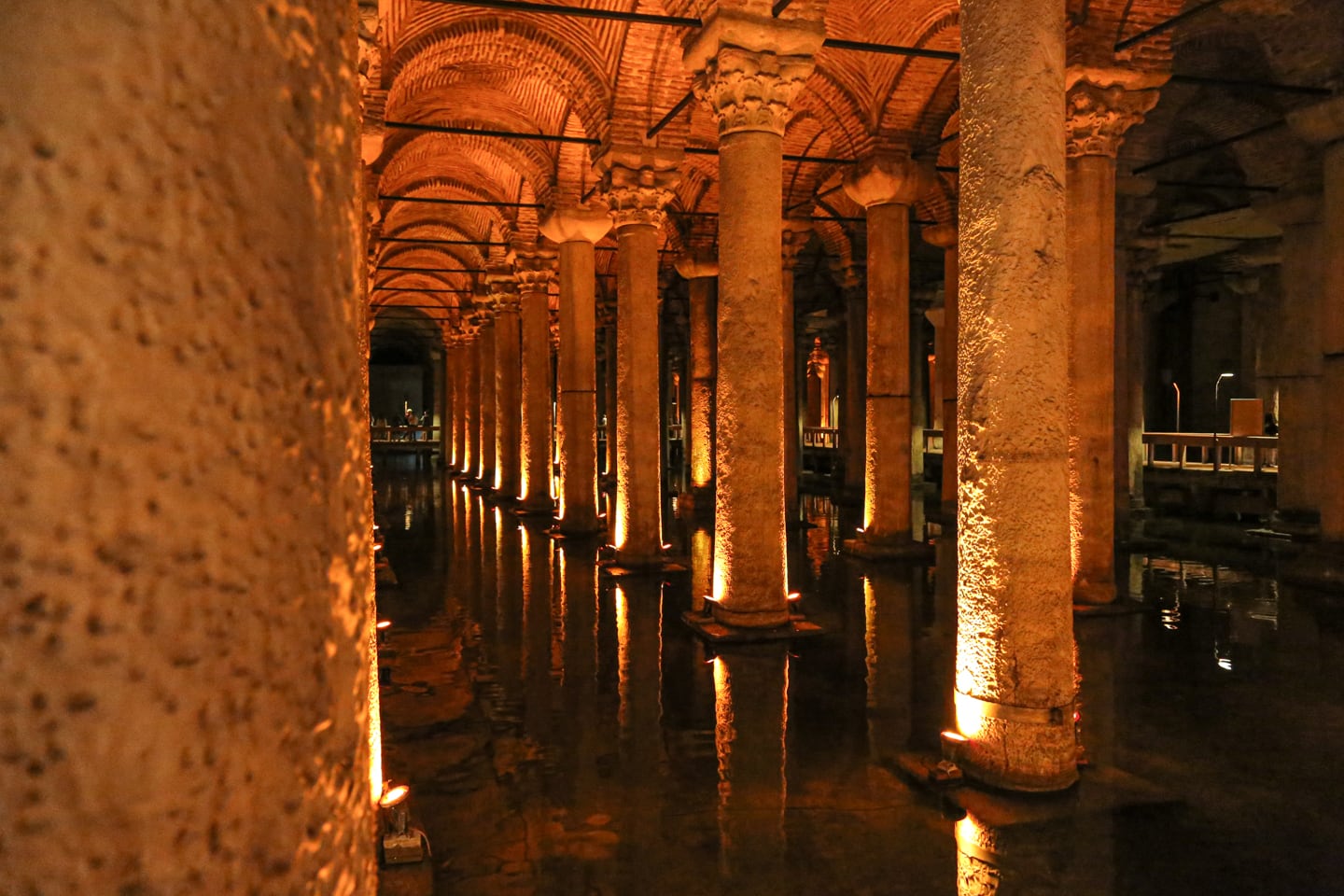
The Basilica Cistern remains one of the enduring highlights of our time in Istanbul. It’s a totally unique experience you’d be hardpressed to find elsewhere, and in our minds is a must-see for anyone with a few days or more to devote to touring the city.
We strongly encourage you to try to visit outside of the most crowded periods. If you aren’t too pressed for time, slow down and take time to poke around and take in your surroundings. It’s unreal to think about everything these columns have witnessed through the ages.
Happy travels!
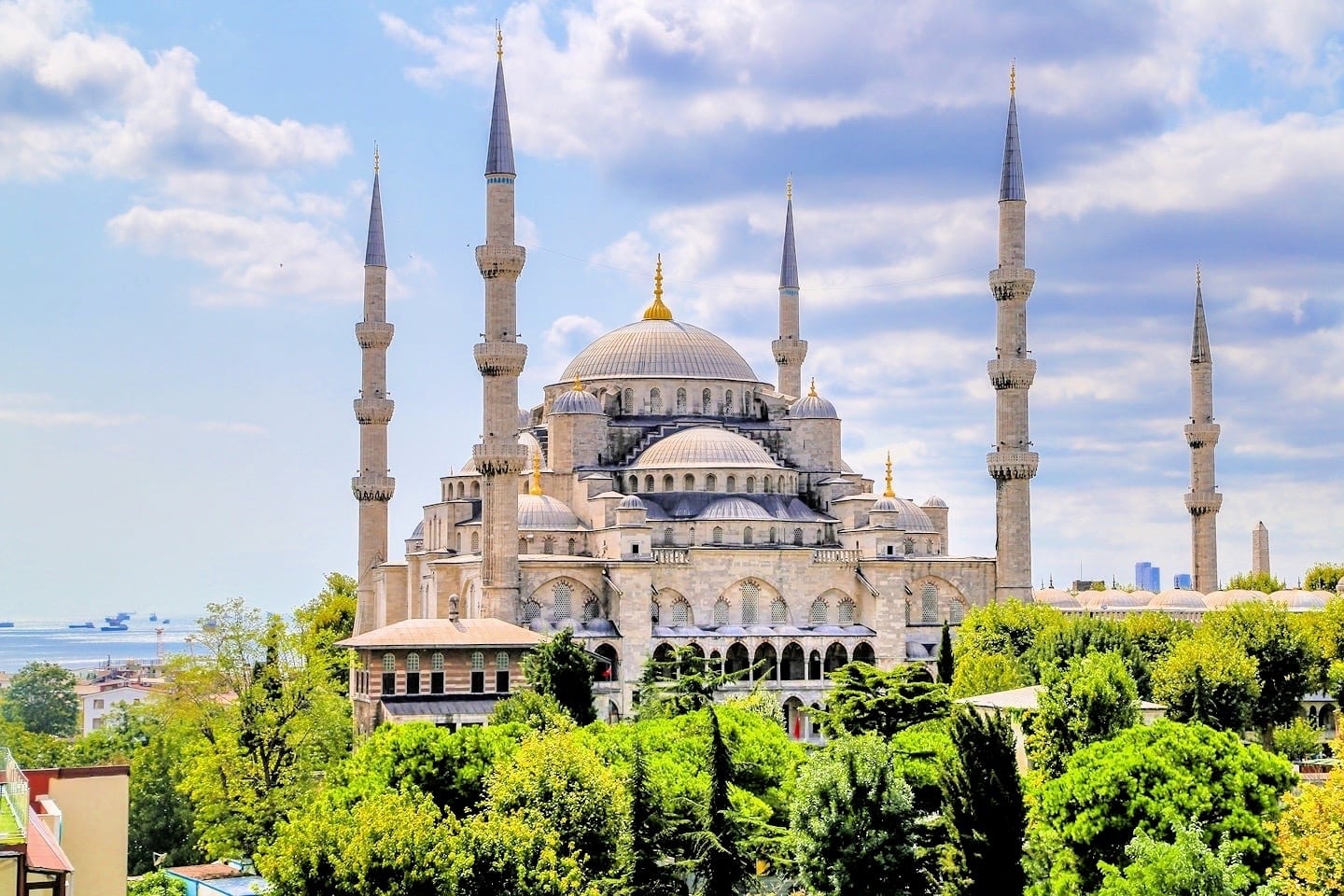
More Turkey & Europe
Around Istanbul
- 7 Best Ways to Cruise the Bosphorus
- The Best Things to Do in Istanbul with Kids
- How to Visit Topkapi Palace in Istanbul
- Istanbul City Walls Self-Guided Walking Tour
Around Europe